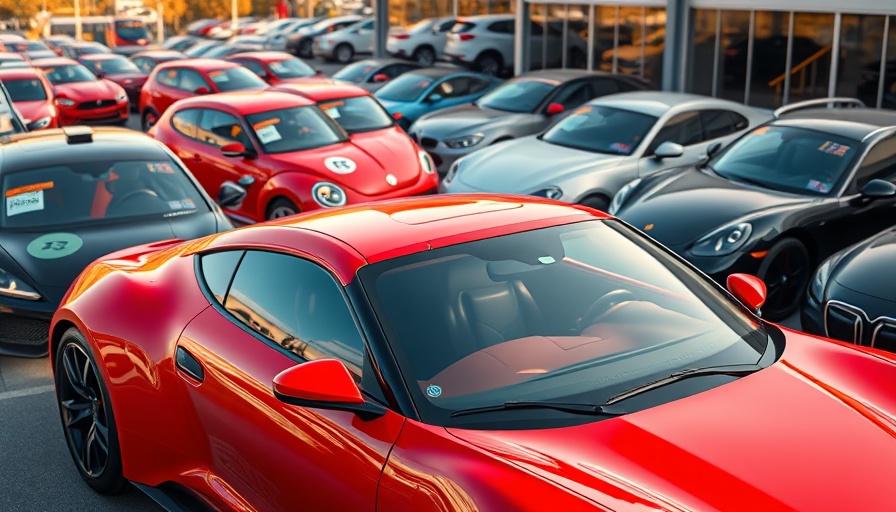
Unlocking the Secret: The Dealership Sticker System
While navigating through a sea of vehicles at a car dealership, you might overlook the small stickers or dots adorning the windshields. However, these seemingly innocuous markers could unlock substantial savings on your next car purchase. Let’s delve into what these dots signify and how they can lead to significant advantages for savvy buyers.
Understanding the Motive: Why the Stickers Matter
Dealerships often face immense pressure to sell vehicles that have lingered on their lots too long. Though many buyers may not be aware, certain dealerships use colored dots or stickers as an internal inventory tool, indicating how long a car has remained unsold. This practice creates a unique opportunity for consumers to negotiate better prices.
Typically, dealerships finance their inventory through a process called floor planning, borrowing money to stock their lots. As cars sit unsold, the accruing interest can eventually lead to significant costs for the dealership. When cars reach their limit, they become eager to sell, which can translate into steep discounts or attractive financing offers for customers willing to ask the right questions.
Negotiation Tactics: How to Maximize Your Savings
If you spot a sticker on a car, take that as your cue to engage the salesperson in conversation. Start by casually asking how long that vehicle has been on the lot. This simple inquiry shows that you're an informed buyer and it might prompt the salesperson to be more forthcoming with information.
As the negotiation unfolds, keep the following in mind: if the car has indeed been sitting for a while, the dealership may be inclined to lower the price significantly. Additionally, bonus structures for sales staff often reward them for moving older inventory. Therefore, a motivated salesperson could further enhance your negotiating power by offering additional perks like complimentary services or warranty upgrades.
Real-World Examples: Stories from the Lot
Consider the story of a young couple who thought they found their perfect family car. Spotting a small dot on the windshield, they inquired about its history. To their surprise, the car had been on the lot for over 70 days. They deftly leveraged this information in their negotiation, walking away with a discount and several free oil changes—all thanks to that little sticker.
Such real-life experiences illustrate how tiny details can turn an overwhelming purchase process into an informed and empowering interaction. Encouragingly, many buyers have successfully used similar tactics to secure fair deals.
Additional Tips: Navigating the Car Buying Landscape
While not every dealership employs a sticker system, it’s prudent to be observant and knowledgeable about the vehicle you’re considering. Always do thorough research prior to your visit and ask about the vehicle’s history, including ownership and any potential issues. Utilize resources like online car reviews and pricing guides to bolster your negotiation stance.
Furthermore, consider timing your purchase at the end of the month; dealerships are often trying to meet sales quotas, making them more willing to negotiate. Create a collaborative atmosphere during your discussions, ensuring that the salesperson sees you as a partner, not an adversary.
Final Thoughts: Empowering the Buyer
The next time you stroll through a dealership, keep an eye out for those tiny stickers or dots. They may seem insignificant, but with the right knowledge, they can provide you an incredible advantage. Don't let the excitement of a new car cloud your judgment; take charge of the situation by using inside strategies to guide you toward the best deal possible.
In a world where car buying can feel intimidating, recognizing opportunities like the secret sticker system can empower you to make informed choices. To further enhance your purchasing experience, consider sharing your tips and stories with fellow car buyers, fostering a community of informed consumers.
 Add Row
Add Row  Add
Add 




Write A Comment